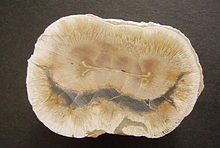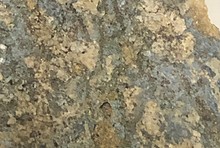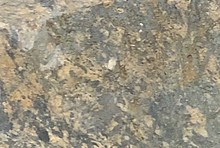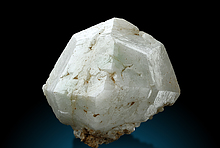Home PageAbout MindatThe Mindat ManualHistory of MindatCopyright StatusWho We AreContact UsAdvertise on Mindat
Donate to MindatCorporate SponsorshipSponsor a PageSponsored PagesMindat AdvertisersAdvertise on Mindat
Learning CenterWhat is a mineral?The most common minerals on earthInformation for EducatorsMindat ArticlesThe ElementsThe Rock H. Currier Digital LibraryGeologic Time
Minerals by PropertiesMinerals by ChemistryAdvanced Locality SearchRandom MineralRandom LocalitySearch by minIDLocalities Near MeSearch ArticlesSearch GlossaryMore Search Options
The Mindat ManualAdd a New PhotoRate PhotosLocality Edit ReportCoordinate Completion ReportAdd Glossary Item
Mining CompaniesStatisticsUsersMineral MuseumsClubs & OrganizationsMineral Shows & EventsThe Mindat DirectoryDevice SettingsThe Mineral Quiz
Photo SearchPhoto GalleriesSearch by ColorNew Photos TodayNew Photos YesterdayMembers' Photo GalleriesPast Photo of the Day GalleryPhotography
╳Discussions
💬 Home🔎 Search📅 LatestGroups
EducationOpen discussion area.Fakes & FraudsOpen discussion area.Field CollectingOpen discussion area.FossilsOpen discussion area.Gems and GemologyOpen discussion area.GeneralOpen discussion area.How to ContributeOpen discussion area.Identity HelpOpen discussion area.Improving Mindat.orgOpen discussion area.LocalitiesOpen discussion area.Lost and Stolen SpecimensOpen discussion area.MarketplaceOpen discussion area.MeteoritesOpen discussion area.Mindat ProductsOpen discussion area.Mineral ExchangesOpen discussion area.Mineral PhotographyOpen discussion area.Mineral ShowsOpen discussion area.Mineralogical ClassificationOpen discussion area.Mineralogy CourseOpen discussion area.MineralsOpen discussion area.Minerals and MuseumsOpen discussion area.PhotosOpen discussion area.Techniques for CollectorsOpen discussion area.The Rock H. Currier Digital LibraryOpen discussion area.UV MineralsOpen discussion area.Recent Images in Discussions
Improving Mindat.orgSecond hand references
14th Jan 2016 15:20 UTCReiner Mielke Expert
The Handbook of Mineralogy, Dana etc.etc. are all compilations not primary references and should not take the place of primary references. Even more annoying is secondary references that refer to other secondary references. For example as http://www.mindat.org/min-40441.html refers to a compilation by Makovicky, E. (2006): Crystal Structures of Sulfides and Other Chalcogenides. Reviews in Mineralogy & Geochemistry, 61, 7-125. [p. 61] which refers to a compilation by Vaughan DJ, Craig JR (1978) Mineral Chemistry of Metal Sulfides. Cambridge Univ Press. Who knows what that refers to? And in case you are tempted to say but Makovicky, E. also refers to the primary reference Scott JD (1974) Experimental methods in sulfide synthesis In: Sulfide Mineralogy, MSA short Course Notes 1. Ribbe P (ed) Mineral Soc Am, p. S1-S38 I say to you it deals in high temp. unstable pyrrhotite polytypes not phases found in nature and so is irrelevant.
14th Jan 2016 15:30 UTCChristian Auer 🌟 Expert
14th Jan 2016 15:45 UTCRob Woodside 🌟 Manager
14th Jan 2016 17:33 UTCWilliam W. Besse Expert
Secondary and tertiary references on localities are just as bad. Let me take Minerals of California (Pemberton, H. Earl, 1983) as an example. Many consider this the bible for California field collecting. Pemberton put a lot of work into it, but it has many holes and misinformation that make it problematic to use sometimes.
Books like this should be considered tools to get to the original citation, then use this (once it is verified) as a reference on Mindat.
Bill
14th Jan 2016 17:58 UTCUwe Kolitsch Manager
Look at the copyright date - the 2003 paper was probably published after the Handbook page was finished.
In addition, the paper is on a synthetic sample which might be different from natural crystals.

14th Jan 2016 18:04 UTCLászló Horváth Manager
14th Jan 2016 20:09 UTCOwen Melfyn Lewis
-------------------------------------------------------
> I'm starting to get annoyed by the copious use of
> second hand references. A second hand reference is
> not a valid reference and I wish people would stop
> using them as if they were first hand. The problem
> with second hand references is that they contain
> errors and by refering to them the errors are just
> perpetuated. As far as I am concerned people who
> quote secondhand references rather than primary
> ones are being lazy. A much loved second hand
> reference is The Handbook of Mineralogy, yes it is
> good but also prone to errors, for example the
> handbook says autunite is tetragonal
> http://rruff.info/doclib/hom/autunite.pdf but the
> primary reference (Locock, A.J. and Burns, P.C.
> (2003) The crystal structure of synthetic
> autunite, Ca[(UO2)(PO4)]2(H2O)11. American
> Mineralogist: 88: 240-244.) shows it is
> orthorhombic.
> The Handbook of Mineralogy, Dana etc.etc. are
> all compilations not primary references and should
> not take the place of primary references. Even
> more annoying is secondary references that refer
> to other secondary references. For example as
> http://www.mindat.org/min-40441.html refers to a
> compilation by Makovicky, E. (2006): Crystal
> Structures of Sulfides and Other Chalcogenides.
> Reviews in Mineralogy & Geochemistry, 61, 7-125.
> which refers to a compilation by Vaughan DJ, Craig
> JR (1978) Mineral Chemistry of Metal Sulfides.
> Cambridge Univ Press. Who knows what that refers
> to? And in case you are tempted to say but
> Makovicky, E. also refers to the primary reference
> Scott JD (1974) Experimental methods in sulfide
> synthesis In: Sulfide Mineralogy, MSA short Course
> Notes 1. Ribbe P (ed) Mineral Soc Am, p. S1-S38 I
> say to you it deals in high temp. unstable
> pyrrhotite polytypes not phases found in nature
> and so is irrelevant.
(tu) :-)
Assuming that what you term a primary reference is what I would term a primary research paper, I'd agree that for any serious opinion to be expressed, (1) personal research and (2) primary research papers are the foundations.
But, sadly and though these are the best we have to go on, neither of these are either complete nor necessarily error-proof. If they were knowledge could not evolve as it surely does. Neither primary research - nor, more particularly, deductions drawn from it are necessarily correct. Compendia of primary (and some secondary) sources have their place - and yes, there is the risk of simple transcription error introduction - but that is inherent to the cross-generational transmission of all knowledge.
So, we are well advised to form opinions slowly and carefully and to use multiple reference texts for information including our own where possible. Gemmology lives and dies by the study of optical characteristics. Yet, as all beginners should find out, the standard reference texts frequently vary in their reporting of the foundations, RIs, birefs and SG in particular. I do not believe that this is due to the incompetence of the authors. Rather these values (as found in nature) are not absolute but lie within some range of values determined by impurity of specimen. Accordingly, whatever compilation of data based on primary research is statistically suspect and there is no doubt that the best respected sources do not always concur as to what key values are.
For myself (and for gemstones only) this first led me not to place implicit trust in any one source, however well-respected. Secondly, it led me to place more than five respected sources on my bookshelf. Thirdly, in determinations of difficulty or in doubt, I have learned never to utter an opinion without having first checked http://www.gemsdat.be/overzicht%20eng.htm There is little if any primary research there but rather it is a secondary (or tertiary) tabulation of the results published as primary (or secondary) research tables.
In academia, gemmology (and mineralogy?) included there is a primal need to to publish research. It is also clear that all that is published, peer-reviewed or not, is not always either correct or the whole story. Self-evidentially (in gemmology) primary research papers are published in eminent journals based of sample counts that are too often statistically insignificant.
We all should find our ways through this life in 'fear and trembling'. Error is always at our elbow . The longer one lives, the more certain of this one becomes and the less inclined to over-state one's case in most discussions. The more one learns, the more one realises the limitations of one's 'knowledge'.

14th Jan 2016 21:39 UTCKelly Nash 🌟 Expert
14th Jan 2016 22:55 UTCAmir C. Akhavan Expert
Second hand references are bad, but so are the thousands of copy-and-paste references.
Most of them do not include a title.
They can be a pain in the ass to fix, in particular the old ones.
Examples:
Eitel (1925) Jb. Min., Beil.-Bd.: 51: 477.
Halla (1930) Ak Wien, Sitzber.: 139: 683.
Is it worth spending the time to figure out what they are about?
And of course the ever popular American Mineralogist without author or title, like
Am. Min. 55: 23.
Yes, you can look those up, but it's simply rude to put such a "reference" anywhere.
Please, include authors and titles.
There is a Mindat standard on how to add references: http://manual.mindat.org/index.php/References
16th Jan 2016 21:27 UTCRalph S Bottrill 🌟 Manager
16th Jan 2016 21:29 UTCReiner Mielke Expert

16th Jan 2016 22:32 UTCChester S. Lemanski, Jr.
When I joined Mindat there were no references for localities or species occurrences at them. In the beginning many of us, myself included, used a lot of abbreviations. In hindsight, we should not have but there was no manual or protocols to guide us. Those old abbreviated references still have a value, albeit diminished. Many will be filled in as the database grows, just as many have already been filled in. If or when we get or have ready access to a comprehensive geoscience library, this is one of several major tasks I foresee for a paid staff of student data input personnel/researchers. Don't forget that this is one of those several areas where we improved things but never went back to bring the then existing data up to standard. We are now paying the price.
Chet

16th Jan 2016 22:35 UTCDoug Daniels

16th Jan 2016 22:54 UTCChester S. Lemanski, Jr.
As the science advances and the tools available to mineralogists get more sophisticated, much work is done on refining the data in the original reference(s). It is commonplace in recent years to see papers published on the redefinition of a a species or the revision of crystallographic data. The original references have great value here.
17th Jan 2016 02:51 UTCRalph S Bottrill 🌟 Manager
I'm sure I'm guilty about entering dodgy abbreviated references in the past too, eg. Bottrill ( in prep.), and now I'm embarrassed but it's a huge job to go back and fix it all, unless we are given all the tools to eg list the dodgy references and do a bulk replacement.

17th Jan 2016 04:54 UTCDoug Daniels

17th Jan 2016 05:06 UTCDoug Daniels
Yes, nothing wrong with the original reference being posted. That should be the first one mentioned. Other (later) references that add new data can then be added. That was kinda my thought.... I'm not known as a smart thinker.
17th Jan 2016 06:06 UTCKeith Compton 🌟 Manager
Perhaps there should be a means of identifying those references that need to be corrected and posted to a Mindat "guru" who can then first check/confirm its correctness and then do a global search and replace.
Amir provided two examples of references that were apparently incomplete or vague Eitel (1925) Jb. Min., Beil.-Bd.: 51: 477 and Halla (1930) Ak Wien, Sitzber.: 139: 683. Perhaps if Emir knew what the correct or complete references and then provided the complete details to a particular person (forum etc) then these could be updated in bulk.
I am sure that there are thousands of such entries. You only have to upload one locality with say 10 different minerals and use a poor/incomplete reference and suddenly there are 11 references that need to be updated.
I know I have uploaded localities with an error in the reference citation and it has taken me ages to correct them - one by one. I certainly have wished for easier ways to update corrections.
Cheers
Keith
17th Jan 2016 08:14 UTCDavid Von Bargen Manager
17th Jan 2016 13:35 UTCReiner Mielke Expert

17th Jan 2016 15:54 UTCAlfredo Petrov Manager
17th Jan 2016 16:19 UTCAmir C. Akhavan Expert
"34970 Total of mineral list entries with no reference"

17th Jan 2016 16:49 UTCAlfredo Petrov Manager
17th Jan 2016 17:13 UTCAmir C. Akhavan Expert
I wish I could see where...
Yes, I was looking somewhere else.

17th Jan 2016 17:31 UTCAlfredo Petrov Manager
17th Jan 2016 19:39 UTCUwe Kolitsch Manager
Ralph: the tool to do bulk replacements is there (see my posting in the managers' forum).
17th Jan 2016 21:48 UTCRalph S Bottrill 🌟 Manager
2nd Feb 2016 14:58 UTCReiner Mielke Expert
between 0 and 0.125. The first reference they give is an outdated one from 1835!
I emailed the IMA and pointed this out and they totally ignored me.
2nd Feb 2016 15:46 UTCUwe Kolitsch Manager
2nd Feb 2016 17:07 UTCRonnie Van Dommelen 🌟 Manager
2nd Feb 2016 17:34 UTCReiner Mielke Expert
2nd Feb 2016 18:36 UTCUwe Kolitsch Manager
- Makovicky, E. (2006): Crystal structures of sulfides and other chalcogenides. Reviews in Mineralogy & Geochemistry 61, 7-125.
(I had sent you the PDF.)
- Wang, H., Salveson, I. (2005): A review on the mineral chemistry of the non-stoichiometric iron sulphide, Fe1-xS (0≤x≤0.125): polymorphs, phase relations and transitions, electronic and magnetic structures. Phase Transitions, 78, 547-567.
(I can send you the PDF.)
- http://scripts.iucr.org/cgi-bin/paper?a21332
- http://www.sciencedirect.com/science/article/pii/002245969090319S
Some authors confuse the pyrrhotite group (which includes troilite) with pyrrhotite s.s.
2nd Feb 2016 21:32 UTCReiner Mielke Expert

24th Aug 2019 16:58 UTCJamison K. Brizendine 🌟 Expert
It may not seem ten years makes a large difference, but in the case of the fluorspar industry, 1952 marked a year when many Illinois fluorspar mines and companies shut down; or went bankrupt due to cheap acid-grade fluorspar deposits in Mexico and the nation-wide steel strike which crippled the metallic and non-metallic mining industry in the United States. 1952 also marked the year when Colorado overtook Kentucky as the second leading producer of fluorspar in the United States.
Another reference that has a ten year span from field-checked date to publication date is <i>Minerals of Indiana</i> (1960). Toward the beginning of that bulletin the authors state that the localities were visited in 1950.
<b>References Cited</b>
Weller, J.M., Grogan, R.M., and Tippie, F.E. (1952) Geology of the fluorspar deposits of Illinois. Illinois State Geological Survey, Bulletin 76: 147 pages
Erd, R.C., and Greenburg, S.S. (1960) Minerals of Indiana: Indiana Geological Survey, Bulletin 18: 19, 63.




Mindat.org is an outreach project of the Hudson Institute of Mineralogy, a 501(c)(3) not-for-profit organization.
Copyright © mindat.org and the Hudson Institute of Mineralogy 1993-2024, except where stated. Most political location boundaries are © OpenStreetMap contributors. Mindat.org relies on the contributions of thousands of members and supporters. Founded in 2000 by Jolyon Ralph.
Privacy Policy - Terms & Conditions - Contact Us / DMCA issues - Report a bug/vulnerability Current server date and time: April 23, 2024 16:34:00
Copyright © mindat.org and the Hudson Institute of Mineralogy 1993-2024, except where stated. Most political location boundaries are © OpenStreetMap contributors. Mindat.org relies on the contributions of thousands of members and supporters. Founded in 2000 by Jolyon Ralph.
Privacy Policy - Terms & Conditions - Contact Us / DMCA issues - Report a bug/vulnerability Current server date and time: April 23, 2024 16:34:00











